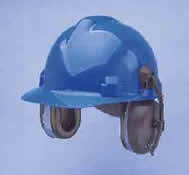Introduction
In year 2011, Malaysia has 13 million population working in various sectors. Workers are at risk of being injured or develop diseases because they are exposed to variety of hazards at the workplace.
What is hazard?
- Hazard is anything that can cause harm
What is risk?
- Risk is the probability of hazard causing harm to the workers
Type of hazards
There are 5 types of hazards:
|
|
|
|
|
|
|
|
|
|
Health effects
- The health effects of hazard to worker depends on:
- Type of hazard
- Duration of exposure
- Amount of hazard exposed
- Workers factors such as age, gender, genetic, health status
- Existing control measures at workplace such as use of machine guarding, exhaust fan and personal protective equipment.
The health effects can be:
|
|
|
|
Prevention
Comprehensive preventive activities of occupational diseases and injuries involve both employer and employee.
- Responsibilities of employer:
- Comply with relevant laws and regulations
- Conduct risk assessment to evaluate the hazards and risks at workplace.
- Implement control measures to make workplace safe and healthy, based on the risk assessment findings.
- Conduct relevant medical examinations for the workers as required by law
- Conduct safety and health training for workers
- Responsibilities of employee:
- Follow safe work procedure
- Cooperate with employer to ensure safety and health
- Wear personal protective equipment which is suitable and proper.
Relevant Laws & Regulations
- Occupational Safety & Health Act 1994
- Factories & Machinery Act 1967
- Pesticides Act 1974
- Social Security Act 1969
Compensation
Workers who contribute to Social Security Organization (SOCSO) are eligible for compensation and rehabilitation services if :
- They are diagnosed as having certain occupational diseases
- They have work related injuries, including commuting injuries to/from work
- They are confirmed invalid due to certain chronic diseases.
FAQ’s
- What is occupational disease?
Occupational disease is a disease which arise following exposure to hazard at workplace. Examples are silicosis following exposure to silica, skin disease following use of rubber glove, hearing loss following exposure to noise at workplace, muscle and joint problem due to frequent manual handling at work. - What is occupational injury?
Occupational injury is an injury which occur at workplace or due to commuting accident while going to/from work. - How do I control hazards at workplace?
Hazard at workplace should be controlled using the following hierarchy:
- Eliminate the hazard by not using it.
- Substitute hazard with less dangerous agent
- Use engineering control, such as automation, machine guarding and local exhaust ventilation.

Use of machine guarding

Use of local exhaust ventilation
- Administrative control such as work rotation, implement safe work procedure, enforcement
- Use of personal protective equipment such as mask, ear plug, goggles, safety boots, safety helmet, glove, apron.

Safety helmet and ear muff

Respirator
- Who should provide personal protective equipment (PPE) to the workers?
It is employer’s responsibility to provide appropriate PPE free of charge for the workers.
- Where should I go if I suspect that I have health problem related to work?
You should see an Occupational Health Doctor for advice and treatment.
- Who should provide personal protective equipment (PPE) to the workers?
Contact address
- For further information, please e-mail to: ohealth@dph.gov.my
| Last Reviewed | : | 10 May 2012 |
| Writer | : | Dr. Sirajuddin Hashim |
| : | Dr. Nor’Aishah Abu Bakar | |
| : | Dr. Abu Hassan Shaari Abd Kadir | |
| Reviewer | : | Wong Swee Fong |














